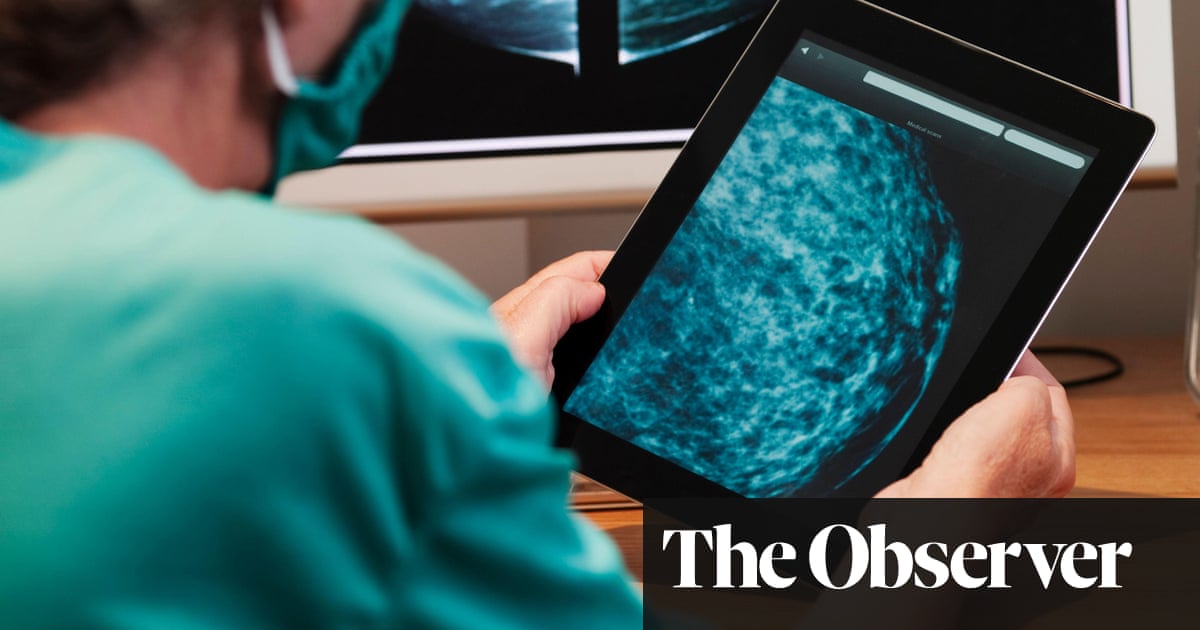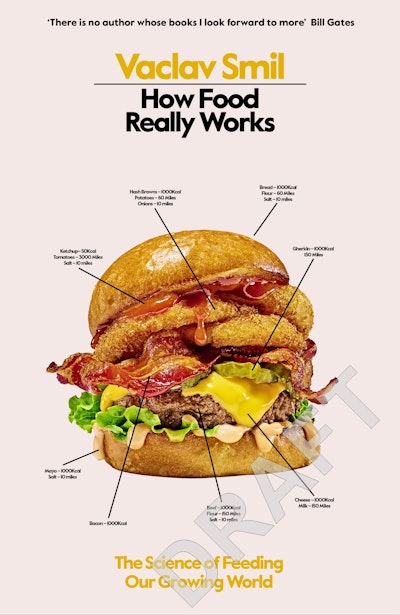E1: Vaccines save 150 million lives, a Toddler's Hearing Restored Through Gene Therapy, Electric Cement Breakthrough, and More

Tony Morley, June 4th, 2024

"On what principle is it that with nothing but improvement behind us, we are to expect nothing but deterioration before us?” — Thomas Babington
Welcome to The Up Wing, Edition 1, the best in progress and optimistic news, collated, curated, and delivered weekly. We report on the past, present, and future of human progress, progress studies, and optimistic news. We're pro-growth, free markets, classical liberalism, Enlightenment, science, technology, and a better future for all humanity. We believe in telling the story of progress and inspiring a better future; after all, to quote Johan Norberg
"People who believe in the future also invest more in the future."
We're still getting the hang of this, more to come.
Roughly 80% of our subscribers are currently free subscriptions; please consider upgrading your newsletter support for as little as $2/month here:
Help support the project by liking and sharing our launch post on X/Twitter here:
UK toddler has hearing restored in world's first gene therapy trial
In a surgery lasting just 16 minutes, UK toddler Opal has had her hearing restored through a breakthrough gene editing treatment; restoring her ability to "hear almost perfectly." It's a groundbreaking moment that's left her parents "gobsmacked"
"We have results from [Opal] which are very spectacular – so close to normal hearing restoration. So we do hope it could be a potential cure.” “There’s been so much work, decades of work … to finally see something that actually worked in humans …. It was quite spectacular and a bit awe-inspiring really. It felt very special."

Global life expectancy to increase by nearly 5 years by 2050
It's one of the best headlines of the year you might have missed. The average global life expectancy is forecasted to increase by nearly five years by 2050, from 73.6 years to 78.1 years, as the average global burden of disease continues to fall.

Ongoing reductions in cardiovascular diseases, respiratory infections, and tuberculosis, maternal and neonatal deaths, and child mortality rates are helping to continue to drive an overall positive trend in global life expectancy rates. Source: Forecasts of disease burden through 2050, IHME, May 16th, 2024

“While health inequalities between the highest- and lowest-income regions will remain, the gaps are shrinking, with the biggest increases anticipated in sub-Saharan Africa.”

Root Source: Burden of disease scenarios for 204 countries and territories, 2022–2050, The Lancet, May 18th, 2024
These shoes are made from wind turbine blades
Renewable energy operator Acciona Energía, in partnership with designer El Ganso, has launched a trainer made with renewable energy and recycled wind turbine blades, the Acciona Energía x El Ganso Sneaker.
"The powder obtained from the wind blade is used as raw material for the manufacture of the soles"
Rather than a global solution for the world's decommissioned turbine blades, the trainers are a concept project, helping inspire innovative and creative thought on the cost-benefit analysis of renewable energy and the complex challenges of recycling turbine components.

A billion tonnes of very low carbon "Electric Cement" by 2050?
A major breakthrough in merging the concrete recycling and steel manufacturing process, what a team from Cambridge University is calling "Electric Cement," could produce very low-emission concrete at scale, "one billion tonnes per year by 2050"
"The method, which the researchers say is “an absolute miracle”, uses the electrically-powered arc furnaces used for steel recycling to simultaneously recycle cement, the carbon-hungry component of concrete."

A new breast tissue preservation process could be a game changer in breast cancer drug development.
"Scientists say they have a made a potentially “gamechanging” breakthrough in breast cancer research after discovering how to preserve breast tissue outside the body for at least a week."
"This breakthrough means that researchers will be able to test new drugs in the lab with far greater accuracy, which should mean fewer drugs failing at clinical trials and ultimately better results for women affected by this terrible disease."

The world has become more resilient to disasters, but investment is needed to save more lives in future
"Deaths from disasters have fallen, but we need to build even more resilience to ensure this progress doesn’t reverse."


"Every ten seconds, one child is saved by a vaccine against a fatal disease."
"Vaccination against measles has had the biggest impact, saving 94 million lives over the last 50 years — more than 60% of the total." — Hannah Ritchie for Our World in Data https://lnkd.in/gAtZv-Nu
"That’s 150 million children who will grow up, experience life, and contribute to the world; over a hundred million sets of parents who were spared the tragedy of having to bury their children."

A new MRI prototype proof of concept is lighter, cheaper, and less power-hungry
Next-gen AI-powered (MRI) prototype is 92% lighter, consumes 93% less energy, and could be 96% less expensive. — MRI Sheds Its Shielding and Superconducting Magnets A cheaper, smaller scanner uses AI to match other MRIs' image quality
A team from the University of Hong Kong published their results in Science on May 10th, 2024. Root Source: DOI: 10.1126/science.adm7168

Concrete design breakthrough replaces 80% of its cement content for coal ash
"New modelling reveals that low-carbon concrete developed at RMIT University can recycle double the amount of coal ash compared to current standards, halve the amount of cement required and perform exceptionally well over time."

A new blood test can predict the risk of returning cancer years in advance; it's a life-changing breakthrough for survivors.
"A new blood test can predict the risk of breast cancer returning three years before any tumours show up on scans in an “incredibly exciting” breakthrough that could help more women beat the disease for good."
"The test detects minuscule amounts of cancer DNA in the bloodstream. Trial results show it is so sensitive that it can accurately predict the risk of cancer coming back, months or even years before the usual signs or symptoms start to emerge."

Rare oysters make a comeback in Scottish estuary, after being "wiped out by overfishing and pollution"
A skipper and a team of 128 people and marine biologists worked for 500 hours to reestablish 15,0000 of a planned 30,000 rare oysters in the Firth of Forth estuary in Scotland. After 67 years, the return of oysters to Firth of Forth is the first since the last verified record of oysters in the estuary in 1957.

An Adjuvant Made in Yeast Could Lower Vaccine Cost and Boost Availability
"Scientists engineer microbes to produce a complex plant-based molecule that is widely used to increase the effectiveness of vaccines"

The results are in: the HPV vaccine prevents 90% of cervical cancer cases, and pre-cancerous conditions by around 95%
The results are in — vaccinating your pre-teen daughter against HPV may well save her life or prevent morbidity. Nearly all cervical cancers (99.7%) are caused by infection from a high-risk HPV — now a new study published in the British Medical Journal has shown the HPV vaccine prevents 90% of cervical cancer cases.
"In the group of women offered vaccination at age 12-13, rates of cervical cancer and CIN3 in the additional year of follow-up were, respectively, 84% and 94% lower than in the older unvaccinated group."

There’s new hope for an HIV vaccine
A trial vaccine has succeeded in generating low levels of antibodies needed to target HIV. It’s a first but much-needed step toward preventing infection.
“This is a scientific feat and gives the field great hope that one can construct an HIV vaccine regimen that directs the immune response along a path that is required for protection,”

This new cancer drug is truly game-changing
A truly game-changing drug could dramatically improve survival rates. "Doctors are hailing “off the chart” trial results that show a new drug stopped lung cancer advancing for longer than any other treatment in medical history."
"More than half of patients (60%) diagnosed with advanced forms of lung cancer who took lorlatinib were still alive five years later with no progression in their disease" "The rate was 8% in patients treated with a standard drug, the trial found."

Books: Progress in print
The Capitalist Manifesto, Why the Global Free Market Will Save the World, Johan Norberg (Available now)
Johan Norberg's latest book, published June 15th, 2023 with Atlantic Books, is available in hardback, audiobook, and is a must-read for anyone interested in human progress and the impact of economic growth on human living standards.
"Marx and Engels were right when they observed in The Communist Manifesto that free markets had in a short time created greater prosperity and more technological innovation than all previous generations combined. A century and a half later, all the evidence shows that capitalism has lifted millions from hunger and poverty."
"Despite the fact that the world population increased by more than 1.5 billion people", "the number of poor decreased by more than 1.1 billion. That is the greatest thing that has ever happened to mankind."


How Food Really Works, The Science of Feeding our Growing Planet — Vaclav Smil, Pre-Order for November 12th, 2024
"A myth-busting book about how the world produces and consumes its food and how to do so without killing the planet"

Data Point: The Most Important Graph In Human History
It's easy to get lost in the news and to find yourself thinking that modern civilization is pretty awful. If you want to shift your perspective on the progress of humanity, you need to zoom out slightly. That's why this single graph from the team at Gapminder, is the single most important graph in the history of human civilization.


Welcome to the single most important graph in the history of human civilization. ☝️
Extra news you might have missed:
- Study identifies 618 proteins linked to 19 types of cancer, which could lead to much earlier detection — Proteins in blood could provide early cancer warning ‘by more than seven years’
- Platelets help blood clot, but they have a short shelf life. With blood in short supply, synthetic platelets could help meet demand. — These Artificial Blood Platelets Could One Day Save Lives
- "Snake-like" Probe Images Arteries from Within. The new fiber-optic probe could transform aneurysm and brain clot treatments
- Herpes cure with gene editing makes progress in laboratory studies
We're still under construction, in beta mode, if you will [still a little 404 broken, with plenty of typos]. The site and newsletter will be updated in the following weeks. The UI/UX is going to get better; we have more great sections and content planned. Thank you kindly in advance.
The Up Wing Corporate
Want to get The Up Wing newsletter for your team? Help inspire and improve the wellbeing of your team by bringing The Up Wing to their inbox every week. Reach out to our team here: tonymmorley * gmail.com (Still working on the contacts portal)
Copyright © 2024 The Up Wing, All rights reserved. The Up Wing is hosted, published, and dispatched by Ghost. If you enjoy our work, you can support The Up Wing with a premium subscription.















